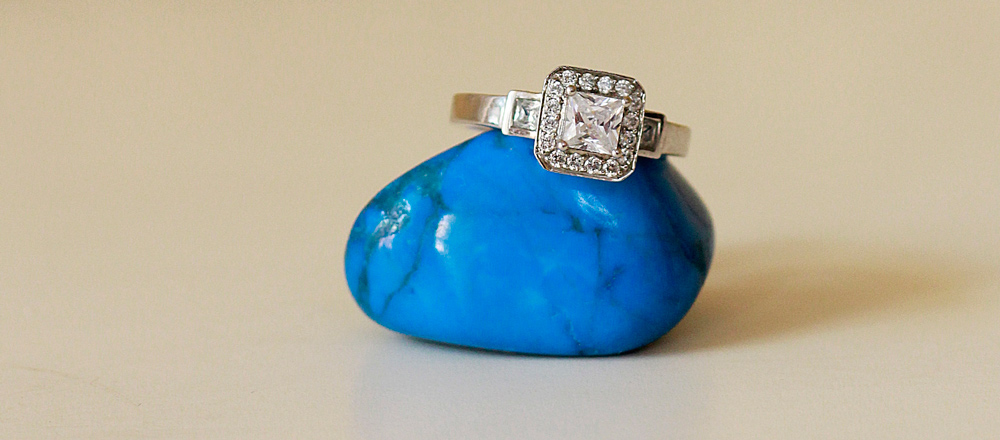When buying a Diamond Engagement Ring there are several factors that need to be taken into consideration besides the 4 C’s. Below you will find other factors including the 4 C’s that need to be taken into consideration. Purchasing a Diamond Ring is one of the most important and personal decisions one will make in their lifetime so it is for this reason that I have outlined the top 10 tips when making that purchase.
1) Certification – The top three certification bodies in Europe are GIA / HRD / IGI, stones sold under other certification bodies can cost substantially less as they may not be as well respected in the diamond industry and may not be as strict in their grading standards. Beware of Jewellery shops that sell Diamonds with their own in house certificates as these are not independent. Always ask to see the certificate when buying a certified diamond.
2) Colour – Ranges from D (colourless) to Z (strong yellow tints). D – F colourless, G – H near colourless. Always ask the jeweller if you can inspect the diamond in daylight as some jewellers lights/lamps can make a diamond brighter than it actually is.
3) Clarity – Ranges from Flawless to Heavily Included (inclusions visible to the naked eye). Only 1% of the worlds diamonds are flawless, all others have clarity characteristics that were created when the diamond was being formed millions of years ago. Best value for money would be VS2/Si1, be careful when buying Si1 stones as quite a number of them have visible inclusions if you look closely enough. Always ask to view the stone with a loupe (10 X magnification), you should see the inclusions through the loupe, then look at the stone with the naked eye, if you can then see the inclusions, this stone is not EYE CLEAN.
4) Carat Weight – 1 carat weighs 0.2 grams. Prices jump at what we call “magic points”. Magic points are 0.5ct, 1 ct, 1.5ct, 2ct etc. Best value is to buy at just under the magic points. eg A 0.9ct stone can cost up to 20% less than a 1 ct stone.
5) Cut – Cut is the most important of the 4 C’s when purchasing an engagement ring. Some get confused between Cut and Shape of the Diamond. Shape refers to Round, Princess, Cushion, Pear, Emerald etc. Cut refers to how well the diamond was crafted from its rough state. If a diamond is not cut correctly it will not have maximum brilliance, fire and scintillation. The cut grade scale is Excellent, Very Good, Good, Fair and Poor. Always select a diamond that has an Excellent or Very Good Cut grade otherwise you may be disappointed when you leave the bright lights of a jewellery shop!
6) Fluorescence – Refers to the diamonds reaction to Ultra Violet (UV) light. If a diamond has fluorescence it may turn milky/cloudy on a sunny day when there is strong UV light. Your diamond may also turn blue under artificial UV light – nightclubs! There is a scale for fluorescence – Nil, Faint/Slight, Medium, Strong and Very Strong. I advise buying diamonds with only Nil or Slight, prices drop significantly when the fluorescence is medium or stronger.
7) Wedfit Engagement Ring- To avoid the costs of custom made wedding rings, also consider the wedding ring when buying your engagement ring. Always check if a straight wedding ring fits snugly against your engagement ring, if not, you may need to have a wedding ring custom made unless you are happy with slight gaps etc.
8)Insurance – Do not over insure you engagement ring. I see customers on a regular basis comment that they had their engagement rings valued at 3/4 times more than they paid. If your engagement ring is lost or stolen, most insurance companies now replace the ring or write a cheque for the replacement value, they generally do not write a cheque for the insurance value unless the item was under insured! Over insuring results in you paying much higher premiums which most insurance companies will gladly accept.
9) Buying Abroad – Always buy from reputable Jewellers, research jewellers on Internet forums before you travel. Ask if the diamond is 100% natural or has it been clarity enhanced, line filled or artificially treated. Consider costs of travel, hotels, time off work, currency rates etc. You are also liable to Irish duties and taxes when you return to Ireland. Consider after sales service, what if there are problems with the ring, diamond becomes loose, diamond on shoulders falls out, ring needs resizing, rhodium plating etc. And remember – “If something seems too good to be true, it normally is”!
10) Platinum versus White Gold – White Gold stays fresher looking for much longer than platinum. White Gold is a little lighter than platinum and needs to be rhodium plated every 12-18 months, this costs approx. €20. Platinum goes a dull greyish colour very quickly. Some jewellers will promote Platinum mainly due to the fact that there is a larger margin on this metal. Most people who work in the Jewellery business select White Gold for their own engagement rings so that should tell you something!






